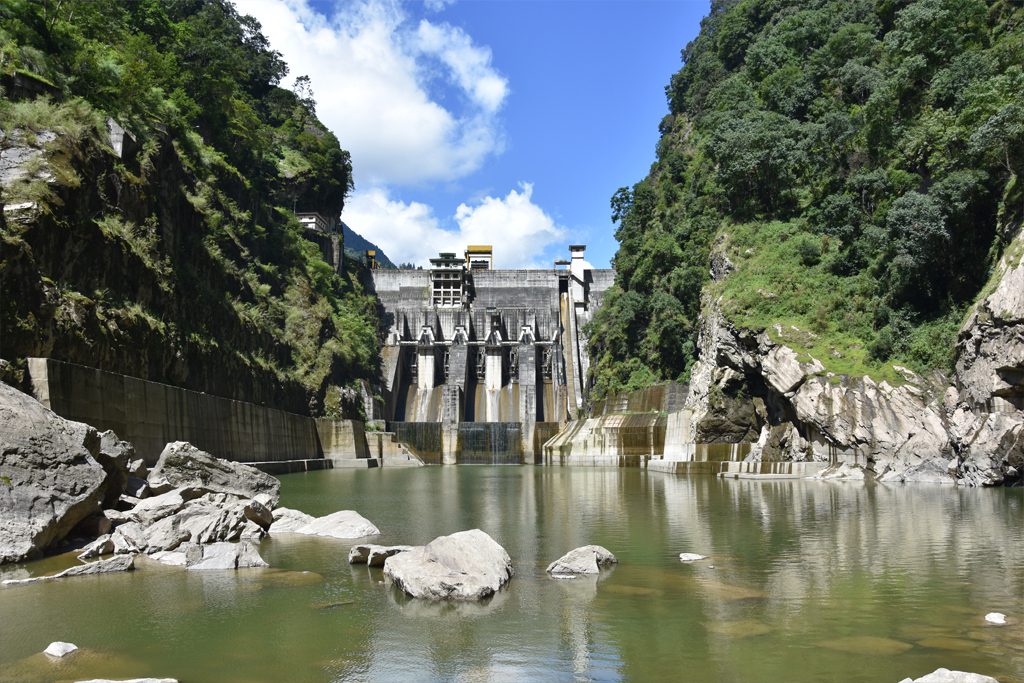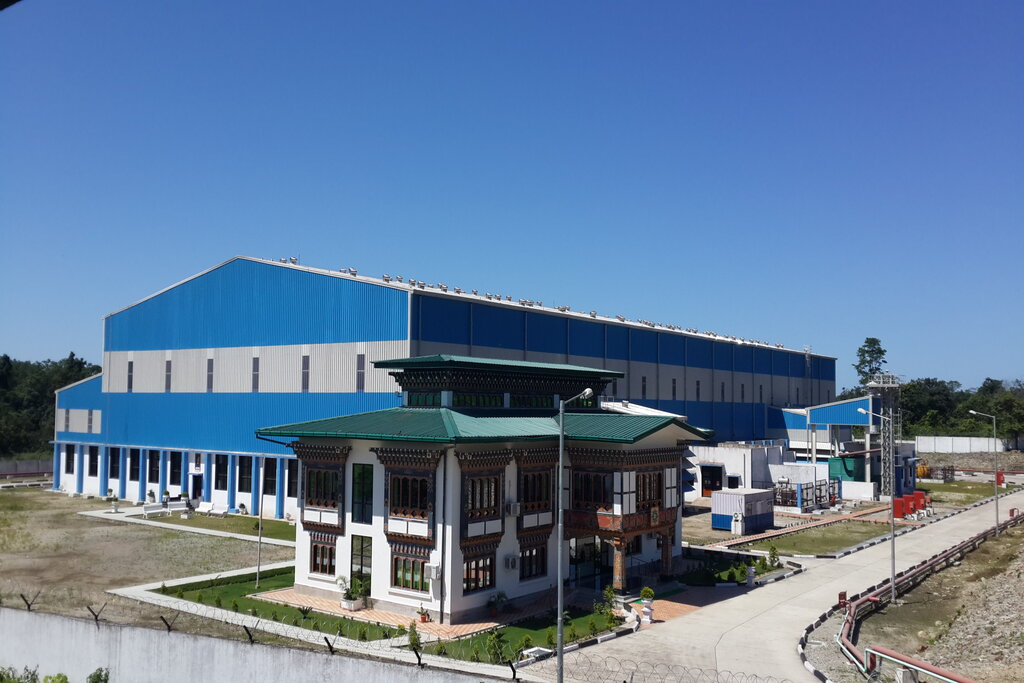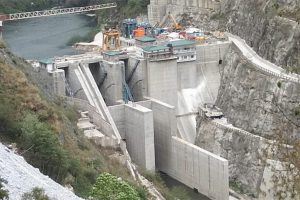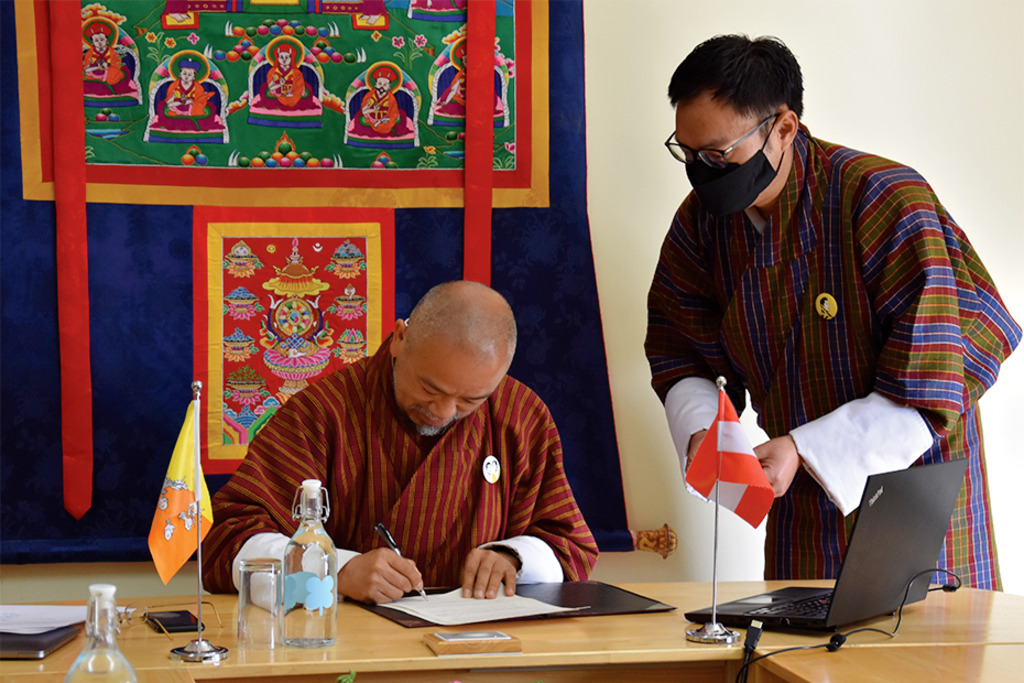Bhutan embarks on small hydropower projects for energy security
… Bhutan imported over 240MU of energy from India between January and March 16
Kuensel | Dechen Dolkar | July 9, 2022
The Druk Green Power Corporation (DGPC) will begin construction of three small hydropower projects, one each at Lhuentse, Zhemgang and Haa, with a total generation capacity of 104 megawatts (MW).
Prime Minister Dr Lotay Tshering attended the Salang Tendrel ceremony at the Powerhouse of the 32MW Yungichhu hydropower project in Maetsho gewog, Lhuentse, yesterday.
Lyonchhen said, “His Majesty said that Bhutan cannot afford to go back to the pre-pandemic status. When the nation was going through the Covid-19 restrictions, and when people stayed indoors, we’ve been working on many plans and programs to take our nation to an all new level. One such is the Small Hydropower Projects. The day is finally here. I feel we’ve taken a humble step towards fulfilling His Majesty’s vision for the country.”
He said that is why it was a historic day and at the same time, a matter of pride for Bhutan. “This is a step towards ensuring energy security and boost economic activities that will help us generations.”
For the first time, he said, only Bhutanese companies and individuals are being involved at all layers of the hydropower project. “We now have all the expertise in house. With the wealth of experience we have accrued over the decades, one that matches out geographical terrain, geological demands and all other factors, we have the best expertise now.”
He said that Bhutan could not have chosen a better timing to invest in local expertise, machineries, workforce and the economy. “To invest in our economy as we aspire for a new normal for Bhutan, we cannot think of any better return on investment than this.”
“I also thank the government of India for all the assistance and partnership in Bhutan’s hydropower journey for decades. As we continue to work together, it’s also thanks to them that we today have the confidence to take up the small projects ourselves. We’ll keep striving to do more and bigger projects,” he said.
While the project in itself is of huge excitement for Bhutan, overall, this is a part of major transformation that is going on in almost every pertinent sectors. “Therefore, the excitement was amplified even more,” Lyonchhen said.
Lhuentse officiating dzongdag, Wangchen Norbu, said that the project would immensely benefit the communities.
He said that it will also bring about infrastructure development. The farm road will be widened and blacktopped.
“The communities will be able to market their farm and dairy produce which they were not able to market till now,” the officiating dzongdag said.
Wangchen Norbu said it will also create employment opportunities and boost the economy in the community.
Maedtso Gup, Gembo said that since it’s a remote village and the villagers are unable to sell farm produce, communities are hoping that they can make a good income from selling them to workers.
He said that it will also offer employment opportunities in the community. There are few school dropouts who were not able to get employment.
He also said that there are few shopkeepers and they will also be benefited immensely.
The idea of building numerous small hydro projects across the country was initiated by the government when the country was experiencing major economic difficulties due to the pandemic. The implementation of the projects will occur in a phased manner.
Phase One
The first phase of the small hydropower projects will also include the construction of the 54MW Burgangchhu in Nangkor gewog, Zhemgang and 18MW Suchhu in Sangbaykha gewog, Haa.
Currently, roads to the powerhouse and intake locations at these two sites are being constructed.
The three projects will generate about 494 million units (MU) of energy annually. They are estimated to cost around Nu 9.2B when completed in 2025.
Between January 1 and March 16 this year, Bhutan imported a little over 240MU of electricity from India through the energy exchange at a cost of Nu 798M.
Located in some of the most remote areas of the country, these small hydropower projects are expected to help accelerate post-pandemic economy recovery, generate employment and bring tangible economic benefits to the people at the grassroots level.
With an aggregated installed capacity of 104MW, the three projects will contribute to strengthening overall energy security and improving grid stability in the country, a press release from DGPC stated.
The DGPC conducted the feasibility studies and developed the Detailed Project Reports (DPR). Druk Hydro Energy Limited, a wholly-owned subsidiary company of DGPC, will oversee the implementation of the projects.
The construction works at all three sites will be undertaken by Bhutanese contractors. The small power plants will be fully automated using the latest state-of-the-art technology to ensure an uninterrupted power supply and low operations and maintenance costs.
The three power projects are expected to employ at least a thousand Bhutanese youth during the construction phase including a hundred de-suups who will be deployed through the DeSuung National Service for Hydropower Construction at the Yungichhu site.
DGPC Managing Director, Dasho Chhewang Rinzin, said that in cognizance of the growing need and priority for enhancing domestic energy security, stimulating economic growth, and in developing local capacity, DGPC was entrusted by the government to assess the potential for small hydropower projects across the country and initiate the construction of those more techno-economically viable projects.
Starting at the beginning of 2021, DGPC undertook extensive studies through several stages of desktop, reconnaissance, field investigations, preliminary designs, and feasibility studies to select the most techno-economically viable projects from an initial list of about 190 sites with a focus on grassroots-level social engagement and long-term environmental sustenance.
He said that through these extensive studies, three projects out of 190 sites were eventually selected for feasibility studies under Phase I small hydro projects.
The feasibility studies, which were completed in December 2021, determined that these three projects were techno-economically feasible to be taken up for construction.
The civil works for the Yungichhu hydropower project were awarded to Rigsar Private Construction Private Limited on June 8 at a contract amount of Nu 1.38 billion with a construction duration of 31 months.
The overall cost of the project is Nu 3.66B (excluding IDC and price variation) and the implementation duration is 36 months. The levelized tariff for the Yunichhu project works out to around Nu 4.52 Nu/kWh. After commissioning, the project will generate 158MU of energy.
The civil works for the Burgangchhu project were awarded to Construction Development Corporation Limited (CDCL) at Nu 0.992B.
The project will generate around 260MU of energy. The total cost of the project is Nu 3.56B
The civil works for Suchhu project were awarded to Vajra Builders Private Limited, at a contract cost of Nu 1.004B
The project will generate 77MU of energy. The total cost of the project is Nu 2.09B.
According to the DGPC, electro-mechanical equipment will be sourced from reputed and established international companies that have the capacity to provide state-of-the-art technologies to enable the fully automated operation of the power plants.
The hydro-mechanical works (gates and hoists) will be directly awarded to Bhutan Hydropower Services Limited (BHSL) to be designed and engineered in close coordination with Bhutan Automation Engineering Limited, who will also be implementing the SCADA system. The pressure penstocks will be awarded through limited bidding.
Phase II projects
The DGPC is currently conducting feasibility studies for the four potential projects to be undertaken in the second phase of small hydropower project construction. With cumulative experience and advanced technical expertise, the company looks forward to undertaking higher capacity projects including small reservoir plants.
Five other projects with a total installed capacity of 261MW have been shortlisted for feasibility studies under Phase II of the small hydropower projects.
It includes 85MW Jomori under Jomotshangkha, Samdrup Jongkhar; 45MW Gamri-I, 85MW Gamri-II projects under Sakteng, Trashigang; 18MW Druk Bindu-I and 8MW Druk Bindu-II projects under Tendruk, Samtse; and 20MW Begana integrated water project under Kawang, Thimphu.
The feasibility studies for the 85MW Jomori hydropower project will be completed by December 2022 while the DPR updates and feasibility studies of the other Phase II projects are scheduled to be completed by June 2023.
“The constructions of the techno-economically viable projects under Phase II are expected to be started within 2023,” Dasho said.
The DGPC MD said that under Phase-III of the small hydro projects, it is intended to expand the scope to a small reservoir scheme of maybe 200MW, and from there move on to larger hydropower projects.
Bhutan has an estimated techno-economically feasible hydropower potential of about 33,000 MW of which only about 7 percent is being harnessed with the present installed capacity of 2,326 MW from its seven large operating power plants.
The country today exports about 70 percent of the generated electricity to India after meeting its internal demand.









